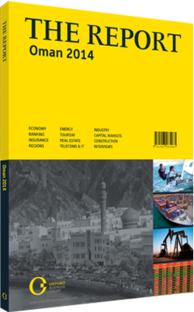OBG talks to Andre Toet and Jamal Aziz, Group CEO and Sohar Freezone CEO, Sohar Port and Freezone

Interview: Andre Toet, Jamal Aziz
Given that container capacity at Sohar Port is set to double to 1.5m twenty-foot equivalent units, how can this attract more shipping lines?
ANDRE TOET & JAMAL AZIZ: The increase of container capacity at the port will provide a long-term solution to handling capacity issues currently being faced by shipping lines. This will ultimately allow them to make commitments to their customer base.
As many international companies rely on longer-term commitments from their suppliers, this will have a positive effect on shipping lines by helping to attract these firms to use Sohar as their base. In addition, the container terminal is investing in larger cranes to enable bigger ships to operate.
Besides the economies of scale that these larger ships offer, it also allows shipping lines to bring Sohar into their main ports of call schedule. This will reduce the need for us to use feeder ships to move containers to other locations, which incurs increased costs. It is therefore expected that the expansion of the terminal will bring down supply-chain costs for both Omani exporters and importers.
What are ports and free zones doing to increase food trading and processing capacity?
TOET & AZIZ: Food security is one of the development pillars of Freezone Sohar (FZS). Within the port perimeters, the authority is working hard with the Public Authority for Strategic Food Reserves to establish an agro-bulk terminal that can handle part of the country’s food reserves. This facility will initially cater for the handling of wheat, grains and sugar, but will prepare itself for a variety of agro-bulk products, mostly to keep costs related to food in Oman as competitive as possible. Within the FZS area, a dedicated cluster is available for logistics, a significant proportion of which is occupied by food logistics. The development of climate- and temperature-controlled warehousing is a key element promoted by the FZS authority to enhance its offerings.
To what extent is there a danger of overcapacity in the sultanate’s port facilities?
TOET & AZIZ: The government is focusing on developing Oman as an economic hub based on facilities at several strategic locations within the sultanate. The port locations in Oman serve as an anchor for those locations to establish industrial and economic facilities. Due to the spread of ports along the 1600-km coastline, the different industrial specialties of each of these ports and their individual catchment areas, the government is securing a base of ports that support one another, rather than compete with each other. As such, we view individual port development as not facilitating overcapacity, but securing long-term growth opportunities for the unique value proposition of each port.
How would you characterise the impact of increased regional competition on Omani ports?
TOET & AZIZ: The Middle East is a positive exception from the pattern of low growth in the world. It goes without saying that countries in this region are seeking to benefit from high levels of GDP. As a result, this creates a competitive environment for ports in the region. Despite the fact that Oman is an up-and-coming logistics centre, it must compete with well-established ports in the region. This puts pressure on the revenues of the sultanate’s ports. In the context of global economic challenges, growth in the Middle East is bucking the trend, and the region is seeking to reap the benefits. One result of this has been an expansion of port facilities in the Gulf. Despite being a relative newcomer to such activities, Oman is still required to compete with its more established competitors. This has put pressure on ports across the region, however, we are confident that the strategic location of both Oman and the country’s expanding logistical infrastructure will provide sufficient incentive for foreign investors to choose the sultanate as a preferred port of call.
You have reached the limit of premium articles you can view for free.
Choose from the options below to purchase print or digital editions of our Reports. You can also purchase a website subscription giving you unlimited access to all of our Reports online for 12 months.
If you have already purchased this Report or have a website subscription, please login to continue.

